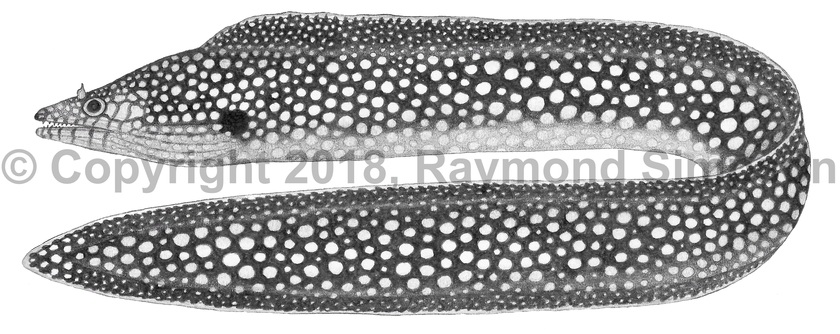
Common Name
Honeycomb Moray
Year Described
Kaup, 1859
Identification
Body elongate yet robust with well developed dorsal and anal finfolds. Trunk a little shorter than tail. Body thickest on anterior third. Head tapers anteriorly. Snout blunt. Jaw closes completely. A single row of fangs along anterior upper jaw and two rearward. A single row of 2-3 median intermaxillary fangs. Vomer with a row of small teeth. Lower jaw with a single outer row of fangs and a handful of larger fangs in an inner row. Anterior nostril is a small tube. Rear nostril a prominent flap extending above head (half the height of Muraena pavonina). Eye large. Throat region grooved. Gill opening a simple hole. Dorsal origin well anterior to gill opening. Fins confluent around tail.
Color
Body dark brown to black with closely set white spots that are smaller than eye diameter. Spots fuse on belly, snout and fin margins to form large pale areas with thin black reticulations. Dark blotch on gill opening. Eye orange. Inside of mouth orangish. Posterior nostril flap white. Juveniles with larger spots.
Size
Maximum size to 100cm TL.
Habitat
Known from insular reefs from 0-60m.
Range
Known only from St. Paul's Rocks, Brazil. Also the eastern Atlantic.
References
Feitoza, B.M., Rocha, L.A., Luiz-Júnior, O.J., Floeter, S.R., & J.L. Gasparini. 2003. Reef fishes of St. Paul’s Rocks: new records and notes on biology and zoogeography. aqua, 7(2), 61-82.
Other Notes
The pale snout and smaller posterior nostril flaps easily separate this species from Muraena pavonina in the field.